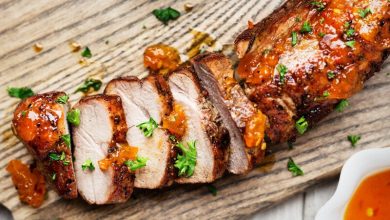🇪🇸 Andalucian Garlic Bread – A Flavorful Delight! 🍞🧄
Andalucian Garlic Bread, also known as “Pan de Ajo Andaluz” in Spanish, is a delicious and aromatic Spanish dish that will make your taste buds dance with joy. This mouthwatering treat hails from the Andalusia region of southern Spain and is a popular choice in Spanish cuisine.
📜 History:
Andalucian Garlic Bread has its roots in the rich culinary tradition of Andalusia, a region known for its flavorful dishes. Garlic bread, in general, is believed to have originated in Italy, but the Andalusian version adds a unique Spanish twist with its use of fresh, locally-sourced ingredients.
🥖 Components:
The key components of Andalucian Garlic Bread include:
- Bread: You’ll need a good-quality baguette or rustic bread for the base.
- Garlic: A generous amount of fresh garlic cloves, finely minced.
- Olive Oil: High-quality extra virgin olive oil is essential for that authentic Spanish flavor.
- Parsley: Fresh parsley, chopped finely for a burst of color and flavor.
- Paprika: Sweet or smoked paprika adds a hint of smokiness and depth.
- Salt: To taste.
- Butter (optional): Some recipes include a small amount of butter for added richness.
👩🍳 Preparation Steps:
-
Preheat the Oven: Preheat your oven to around 350°F (175°C).
-
Prepare the Bread: Slice the baguette lengthwise, creating two halves. You can also slice it into individual pieces if you prefer.
-
Make the Garlic Paste: In a bowl, combine the minced garlic and a generous amount of olive oil. The amount of oil should be enough to make a paste that’s easy to spread.
-
Spread the Garlic Paste: Use a brush or a spoon to evenly spread the garlic and olive oil mixture over the cut sides of the bread. Make sure to cover the bread thoroughly.
-
Add Flavor: Sprinkle the chopped parsley, a dash of paprika, and a pinch of salt over the garlic-covered bread. If you like, you can also add a thin layer of butter for extra richness.
-
Bake: Place the prepared bread on a baking sheet and bake it in the preheated oven for about 10-15 minutes or until it’s crispy and golden brown.
-
Serve Hot: Once it’s done, take it out of the oven, let it cool for a minute or two, and then slice it into pieces. Serve it hot as an appetizer or alongside your favorite Spanish dishes.
⏰ Preparation Time:
The total time needed to prepare Andalucian Garlic Bread is approximately 20-30 minutes, making it a quick and delightful addition to any meal or tapas spread.
Enjoy this delectable Andalusian treat, and may your taste buds savor the rich flavors of Spain! 🇪🇸🍴🌿
Certainly! Here are the nutrition facts and health information for Andalucian Garlic Bread:
Nutrition Facts (Approximate values per serving, assuming a baguette is divided into 4 servings):
- Calories: 200-250 calories
- Total Fat: 8-10 grams
- Saturated Fat: 1-2 grams
- Trans Fat: 0 grams
- Cholesterol: 0 milligrams
- Sodium: 300-400 milligrams
- Total Carbohydrates: 27-30 grams
- Dietary Fiber: 2-3 grams
- Sugars: 1-2 grams
- Protein: 4-5 grams
Health Information:
Andalucian Garlic Bread, while incredibly delicious, is also relatively high in calories and fat due to the use of olive oil. However, it can still be a part of a balanced diet when enjoyed in moderation. Here are some health considerations:
-
Olive Oil Benefits: The extra virgin olive oil used in this recipe is a source of heart-healthy monounsaturated fats and antioxidants, which may have potential health benefits.
-
Garlic Health Benefits: Garlic is known for its potential health benefits, including its ability to boost the immune system and improve cardiovascular health.
-
Portion Control: Be mindful of portion sizes, as excessive consumption can lead to higher calorie and fat intake. Consider sharing it with others as an appetizer.
-
Bread Choice: Opt for whole-grain or whole-wheat bread for added fiber and nutrients.
-
Sodium: Be cautious with the amount of salt used, especially if you have high blood pressure. Consider reducing the salt content if needed.
-
Balanced Diet: Enjoy Andalucian Garlic Bread as part of a balanced diet that includes a variety of foods to ensure you’re getting all the necessary nutrients.
Remember that individual nutritional needs can vary, so it’s a good practice to consult with a healthcare professional or a registered dietitian if you have specific dietary concerns or health goals.




